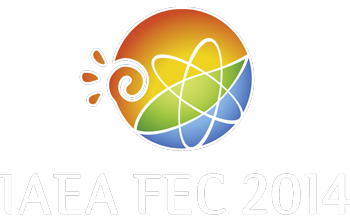Conveners
Core Turbulence: EX/2 & TH/1
- Evgeniy Gusakov (Russian Federation)
Mr
Shigeru Inagaki
(Japan)
15/10/2014, 10:45
Oral
Here we developed research methods of plasma turbulence transport associated with the non-local features. The ECH modulation experiment and the higher harmonic analysis of the heat wave indicated: (i) propagation of the change of Te at the time of switch-off/on of ECH power is about 5 times faster than that of perturbation itself, (ii) propagation of the higher (7th) harmonic of the Te...
Mr
George R. McKee
(USA)
15/10/2014, 11:05
Oral
Multi-scale turbulence properties are significantly altered and typically exhibit increased amplitude in high-beta inductive plasmas as parameters approach those anticipated in burning plasmas. These increases, observed with multiple fluctuation diagnostics in high performance H-mode plasmas on DIII-D, explain the consequent local transport and global energy time confinement response. Burning...
Mr
Shinya Maeyama
(Japan)
15/10/2014, 11:25
Oral
Understanding electron heat transport is one of the critical issues in ITER. Although electron temperature gradient (ETG) driven turbulence has been regarded as a candidate of electron heat transport, recent multi-scale plasma turbulence simulations have reported that ion-scale instabilities such as ion temperature gradient modes (ITGs) and trapped electron modes (TEMs) dominate heat transport...
Mr
Per Helander
(Germany)
15/10/2014, 12:05
Oral
We summarise a number of recent advances in gyrokinetic theory and simulations of microinstabilities and turbulence in stellarators, and compare with tokamaks.
Trapped-electron modes (TEMs) can be very different in different types of devices, because these instabilities are excited by trapped electrons in regions of unfavourable magnetic curvature. Tokamaks and stellarators are...

